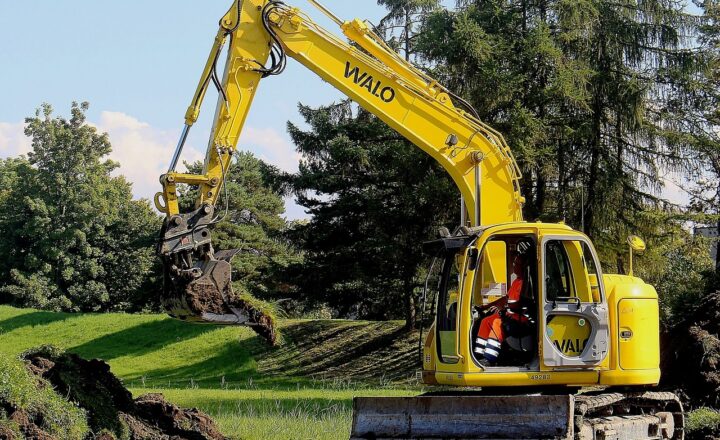
In every culture, relics of the past reveal rich histories, offering insights into human civilization, artistry, and life itself. However, the fragility of ancient artifacts makes them susceptible to deterioration from environmental factors, mishandling, and time. Thankfully, the advancements in technology have paved the way to not only preserve these irreplaceable pieces of history but also showcase them to broader audiences across the globe. This article explores the myriad ways technology assists in the preservation and presentation of ancient artifacts, enhancing both their protection and accessibility.
1. Importance of Preserving Ancient Artifacts
Preserving ancient artifacts is crucial for several reasons:
- Cultural Heritage: Artifacts represent the identity and heritage of civilizations, providing a connection to the past that enriches our understanding of human history.
- Educational Value: Museums and educational institutions rely on ancient artifacts to teach and inspire future generations about history, science, and art.
- Scientific Research: Artifacts hold invaluable information that can aid in archaeological studies, historical research, and scientific investigation of past societies.
As these treasures face threats from natural decay, urban development, and climate change, technological intervention becomes a saving grace in their conservation efforts.
2. Techniques for Preserving Artifacts with Technology
Innovations in technology have introduced powerful methods for preserving ancient artifacts. Some of the key technologies include:
2.1. 3D Scanning and Printing
3D scanning technology enables meticulous capture of an artifact’s size, shape, and intricate details without direct contact. By generating accurate digital representations, museums can:
- Create high-fidelity replicas for display, minimizing the handling of original artifacts.
- Facilitate virtual reality experiences, allowing users to engage with artifacts in immersive digital environments.
- Support restoration efforts by providing precise data for reconstructing damaged items.
2.2. Climate-Controlled Storage
Artifacts are highly sensitive to humidity, temperature, and light exposure. Advances in climate technology enable museums and storage facilities to maintain optimal conditions:
- Automated systems monitor and regulate temperature and humidity levels, effectively preserving material integrity.
- LED lighting solutions provide safe illumination for artifacts while reducing heat and UV exposure.
2.3. Digital Preservation
Digitizing records of artifacts enables institutions to archive information without the risk of damage:
- High-resolution photography creates permanent digital copies that can be used for research and educational purposes.
- Online databases allow for global access to information about artifacts, promoting awareness and appreciation.
2.4. Chemical Treatments and Conservation Materials
Advances in materials science have led to the development of specialized chemical treatments and conservation materials that help preserve artifacts while preventing deterioration:
- Innovative coatings and adhesives protect materials from environmental damage and enhance their stability.
- Nanotechnology applications enable the reinforcement of materials at a molecular level, ensuring durability.
3. Showcasing Ancient Artifacts Through Technology
Increasingly, museums and cultural organizations use technology not only to preserve artifacts, but also to enhance how they are displayed and interacted with:
3.1. Virtual Exhibitions
With the rise of remote engagement, virtual exhibitions allow individuals from around the world to explore artifacts from the comfort of their homes. These exhibitions leverage:
- 360-degree views, enabling visitors to examine items closely from different angles.
- Augmented reality features that bring artifacts to life through interactive storytelling and educational content.
3.2. Mobile Applications
Museums are increasingly developing mobile apps to enhance visitor experiences:
- Interactive guides provide detailed information about exhibits and artifacts, offering context and historical significance.
- Gamified experiences engage younger audiences, encouraging exploration while learning about history.
3.3. Social Media and Online Campaigns
Social media has become a powerful platform for museums to share artifacts and educate the public:
- Creative posts and stories highlight artifacts’ histories, stimulating public interest and engagement.
- Online fundraising campaigns generate support for preservation efforts, ensuring artifacts are protected for future generations.
4. The Role of Artificial Intelligence and Machine Learning
Recent breakthroughs in artificial intelligence (AI) and machine learning (ML) offer another layer of support for preserving and showcasing artifacts:
- Predictive Analytics: AI can analyze data patterns related to condition monitoring, predicting the risk of deterioration and proactively suggesting conservation measures.
- Automated Cataloging: AI algorithms assist in organizing artifacts into structured databases, enabling efficient access and management.
- Cultural Insights: Machine learning tools can analyze large datasets to uncover insights about ancient civilizations, enhancing academic research.
5. Challenges and Considerations
While technology presents significant advantages in preserving and showcasing ancient artifacts, it also brings challenges that need to be addressed:
- Cost: Implementing advanced technologies can be expensive, limiting access for smaller institutions.
- Data Security: With increased digitization comes the need for rigorous data security measures to protect against cyber threats.
- Ethics: The use of digital media should always respect cultural heritage and avoid appropriation issues.
Addressing these challenges requires collaboration among stakeholders, continuous investment, and ethical considerations to ensure that technology enriches the preservation of our shared cultural heritage.
Conclusion
Technology serves as a powerful ally in the mission to preserve and showcase ancient artifacts that hold invaluable information about our past. By leveraging advanced methods, institutions can extend the life of these treasures while ensuring accessibility to future generations. As we navigate the evolving landscape of technology and heritage conservation, it is essential to remain committed to ethical practices that honor and respect cultural heritage, and to ensure that every effort made brings us closer to understanding our past in ever more meaningful ways.
Whether you visit a museum, engage with a virtual exhibition, or utilize mobile applications, remember that every interaction with ancient artifacts is an opportunity to connect with the billions of stories waiting to be told.







